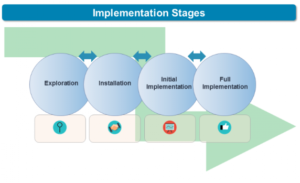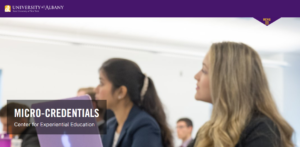Improvement and Implementation Science and What They Have to Do with Continuous Improvement in Schools
by Kristen C. Wilcox
School leaders and teachers need innovations that help them produce improvements that address the disparities of learning opportunities too many young people experience in K-12 schools. Innovative practices that re-center leaders’ and teachers’ attention on the agency and voices of those in communities (in and outside of schools) and de-center traditional hegemonic structures that suppress them are of high currency as needs for rapid innovation require adaptable school “improvement infrastructures”.
In particular, leaders and teachers need to know how to engage all stakeholders in promoting continuous learning in their respective organizations given widening disparities in educational opportunity and outcomes related to a range of variables. These include and are not limited to socioeconomic status, ethnicity, linguistic background, gender, gender identity, sexual orientation, disability, and religion.
Improvement science (IS) serves as a resource for learning to get better at getting better. As discussed in a previous NYKids blog. IS is predicated on the principle that for improvement to take hold and be sustained over time, the work needs to be “problem-specific and user-centered”: That is— participatory engagement of stakeholders is key to improving.

Implementation science complements improvement science in that it focuses attention on how innovation is put into practice and diffused. Theories of implementation tend to focus on stages of implementation conducive to individual and organizational learning and adaptation.
The companion goals of improvement and implementation science-based research are to identify what works well for whom, under what conditions, and what specifically is required to help equip people to perform better.
Developments in Continuous Improvement Research
Arnetha Ball asserted years ago that “to know is not enough” in her call for researchers and practicing professionals to take seriously the need to act in concert to tackle long-standing inequities in schools. Flash forward to 2020, and we see the fallout of the inadequate attention that has been paid to the increasing opportunity gaps experienced by those most marginalized in our society.
In a recent article Yurkofsky and his colleagues offer several recommendations to reach the lofty goal of more scaling and spreading of improvements to reach equity aims in U.S. schools as well as other nations around the globe.
Pathway #1: Clarify and Test Mechanisms for Continuous Improvement
The first of the “pathways forward” the authors describe is for researchers to clarify and test out “…different mechanisms by which continuous improvement (CI) methods yield improvements in teaching and learning”. They give an example of how components of CI methods include intermediate actions and outcomes such as the development of professional learning communities or the social network structure of network improvement communities to accelerate improvements across schools and districts.
Pathway #2: Determine Best Methods Based on Context
A second pathway forward calls for more investigation of CI methods “…in terms of the combination of protocols and routines that make them up” and how well they work in different settings. These protocols, routines, and processes such as running PDSA cycles are prominent in CI methods, yet research has shown that many practicing professionals struggle with iterating PDSAs with all of the many conflicting priorities they face.
Learning through Science to Better Address Equity and Social Justice Aims

Learning to get better at getting better requires a concerted effort between researchers and practicing professionals and with necessary support and understanding of policymakers. To this end, NYKids always seeks to share knowledge about improvement and implementation science and seeks to bridge the divides between research and practice so that lasting and deep improvements across the educational pipeline can be achieved.
Thankfully, more and more organizations like the National Implementation Research Network and The Carnegie Foundation for the Advancement of Teaching as well as universities, including the University at Albany, are focusing their attention on providing expertise on improvement and implementation science.
Check out University at Albany’s micro-credential in improvement science if you have interest in learning more.
And for information about NYKids’ continuous improvement partnerships, resources, and tools check out our resources page or reach out to us at nykids@albany.edu if you would like to partner with us or have a network who could use continuous improvement expertise.
